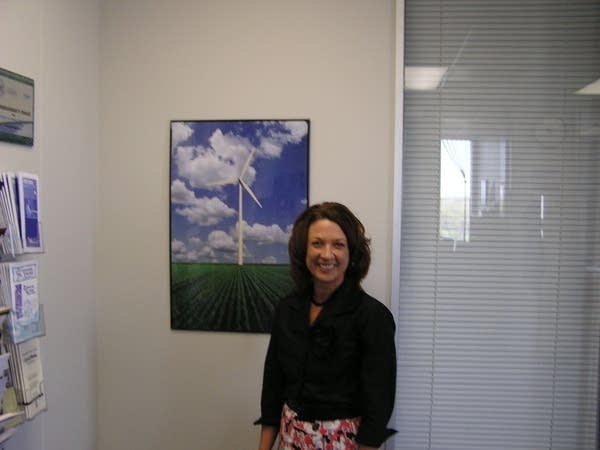Moorhead utility wants to revive interest in wind power
Go Deeper.
Create an account or log in to save stories.
Like this?
Thanks for liking this story! We have added it to a list of your favorite stories.

Moorhead residents have supported the wind power program since the first wind turbine went up in 1999. That's when the local utility, Moorhead Public Service, announced if enough customers would commit to the project it would bring wind power on line. Jennifer Walz is the utility's director of communications.
"We invited people to sign up to "Capture the Wind" and that first turbine was subscribed within two weeks," says Walz. "Which shows that there were people willing to pay extra."

Moorhead Public Service has 14,000 customers, about five percent or 700 are signed up for the voluntary wind power program. Those customers pay an extra $5 a month for green power.
Dorothy Dodds was among the first to sign up for the program. The 82-year-old retired school teacher says the extra cost is not a problem.
Turn Up Your Support
MPR News helps you turn down the noise and build shared understanding. Turn up your support for this public resource and keep trusted journalism accessible to all.
"Oh heavens no, and I don't think many people would think of it as such," says Dodds.
Dodds likes the idea of using renewable energy sources. She believes it's a good way to reduce our dependence on fuels such as coal and oil.
The wind power program is popular with younger consumers, especially college students. The Minnesota State University - Moorhead campus gets some of its electricity from wind power.
Students support the idea so much they voted to assess themselves a green fee. David Crockett is vice-president of administrative affairs at MSUM. He says students on campus pay the $3 green fee each semester to support various programs including wind power.

"That fee is used for recyclables, it's used for different sustainable campus initiatives that the students are interested in," says Crockett. "Frankly, they (students) have put themselves in a position to commit half of their fee toward the next windmill project."
Crockett says in addition to the student green fees the university pays $500 a month to support the wind program. He says the school is negotiating with the utility on a deal to build a third wind turbine to power buildings on campus.
"I think we're close," says Crockett. "If we can get the city of Moorhead to participate some what with our students then we can do it."
The opportunity to partner with MSUM on a new turbine comes at a good time. Moorhead Public Service built its first generator in 1999, a second followed in 2001.

That year the city's wind power program was ranked first nationally for customer participation, a ranking it held until 2003.
Jennifer Walz says the utility now ranks ninth nationally. In the past wind power has sold itself in the Moorhead area. Walz says now the utility may need to work more aggressively to market the program to new customers.
Walz thinks the current energy problems facing the country present the utility with a unique challenge. People are angry about rising gas prices. They're mad that it costs more to heat and cool their homes.
They're looking for new sources of energy to replace a dwindling supply of fossil fuels. Walz says the trick is to convince people wind energy isn't a quick fix solution but a long term investment.
"To ask people to pay more is hard, but by the same token, with all these issues right in our face, it's harder to look away now," says Walz. "I think we're starting to realize, the down side of our existing energy sources and why we really need to look elsewhere for our long term solution."
Utility officials will continue to talk with potential new customers about wind energy, but they won't build any new wind generators until the customer base to support it is on line.
Dear reader,
Political debates with family or friends can get heated. But what if there was a way to handle them better?
You can learn how to have civil political conversations with our new e-book!
Download our free e-book, Talking Sense: Have Hard Political Conversations, Better, and learn how to talk without the tension.





